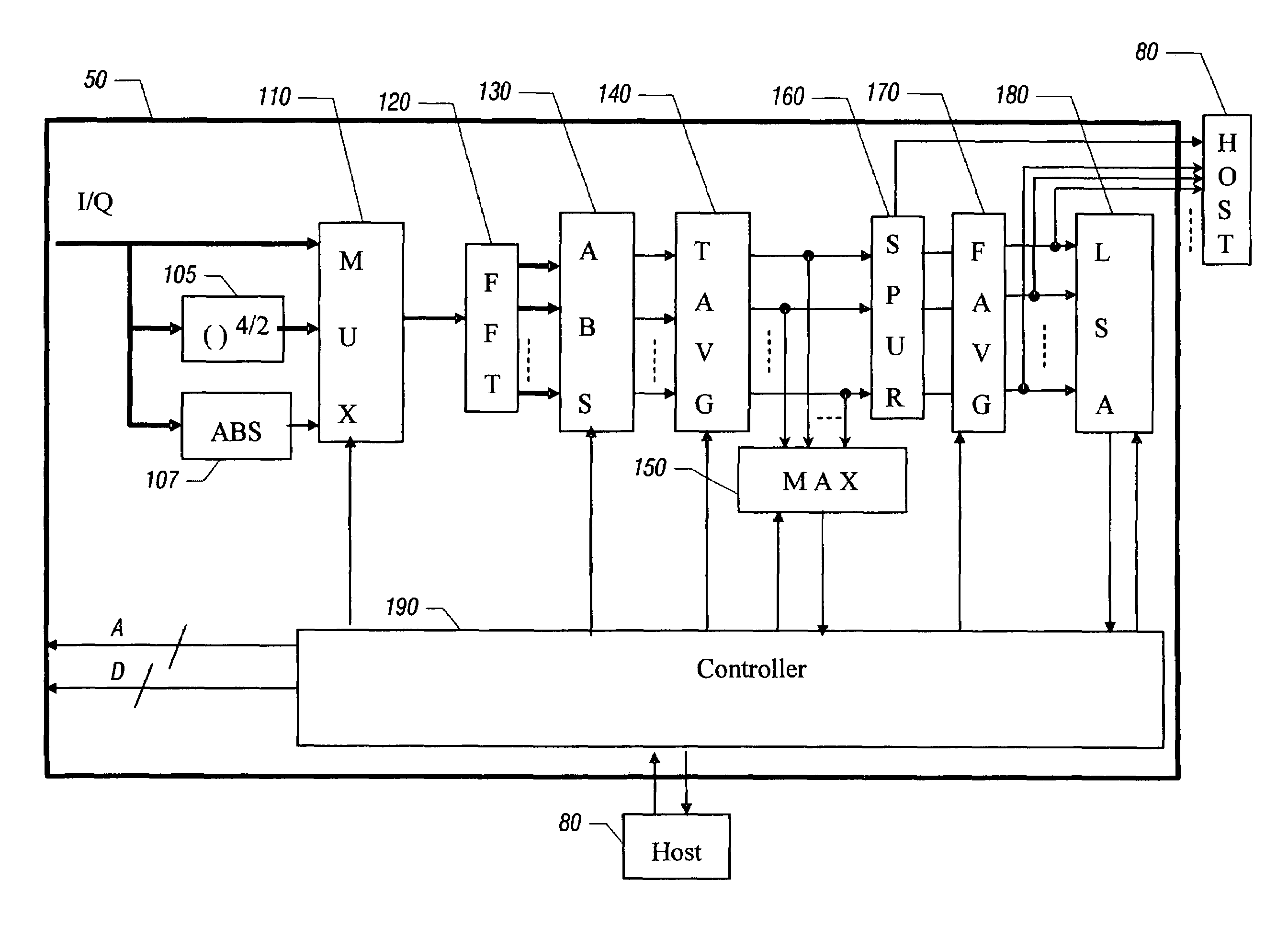Performing blind scanning in a receiver
a receiver and blind scanning technology, applied in the field of blind scanning in the receiver, can solve the problems of excessive time, inefficient blind scanning functionality, and significant time required to perform analysis of the rf spectrum
- Summary
- Abstract
- Description
- Claims
- Application Information
AI Technical Summary
Benefits of technology
Problems solved by technology
Method used
Image
Examples
Embodiment Construction
[0021]In various embodiments, blind scan processing may be performed using blind scan circuitry to identify channels present within a selected RF spectrum, as well as to determine the symbol rate of such channels, among other such information. In this manner, a list of carrier frequency estimates (CFEs) and corresponding symbol rate estimates (SREs) may be determined. More so, blind scan processing may be rapidly performed, as frequency ranges within an RF spectrum that do not include any valid channels can be quickly bypassed, avoiding the need for exhaustive scanning of the entire RF spectrum. Still further, similar blind scan circuitry may be used to perform frequency acquisition for a desired channel. In such manner, a selected channel can be tuned, even when an associated antenna such as an LNB is uncompensated for frequency errors.
[0022]In various implementations, a linear spectrum analysis (LSA) may be performed on incoming digital data to obtain raw estimates for CFE and SRE...
PUM
 Login to View More
Login to View More Abstract
Description
Claims
Application Information
 Login to View More
Login to View More - R&D
- Intellectual Property
- Life Sciences
- Materials
- Tech Scout
- Unparalleled Data Quality
- Higher Quality Content
- 60% Fewer Hallucinations
Browse by: Latest US Patents, China's latest patents, Technical Efficacy Thesaurus, Application Domain, Technology Topic, Popular Technical Reports.
© 2025 PatSnap. All rights reserved.Legal|Privacy policy|Modern Slavery Act Transparency Statement|Sitemap|About US| Contact US: help@patsnap.com



